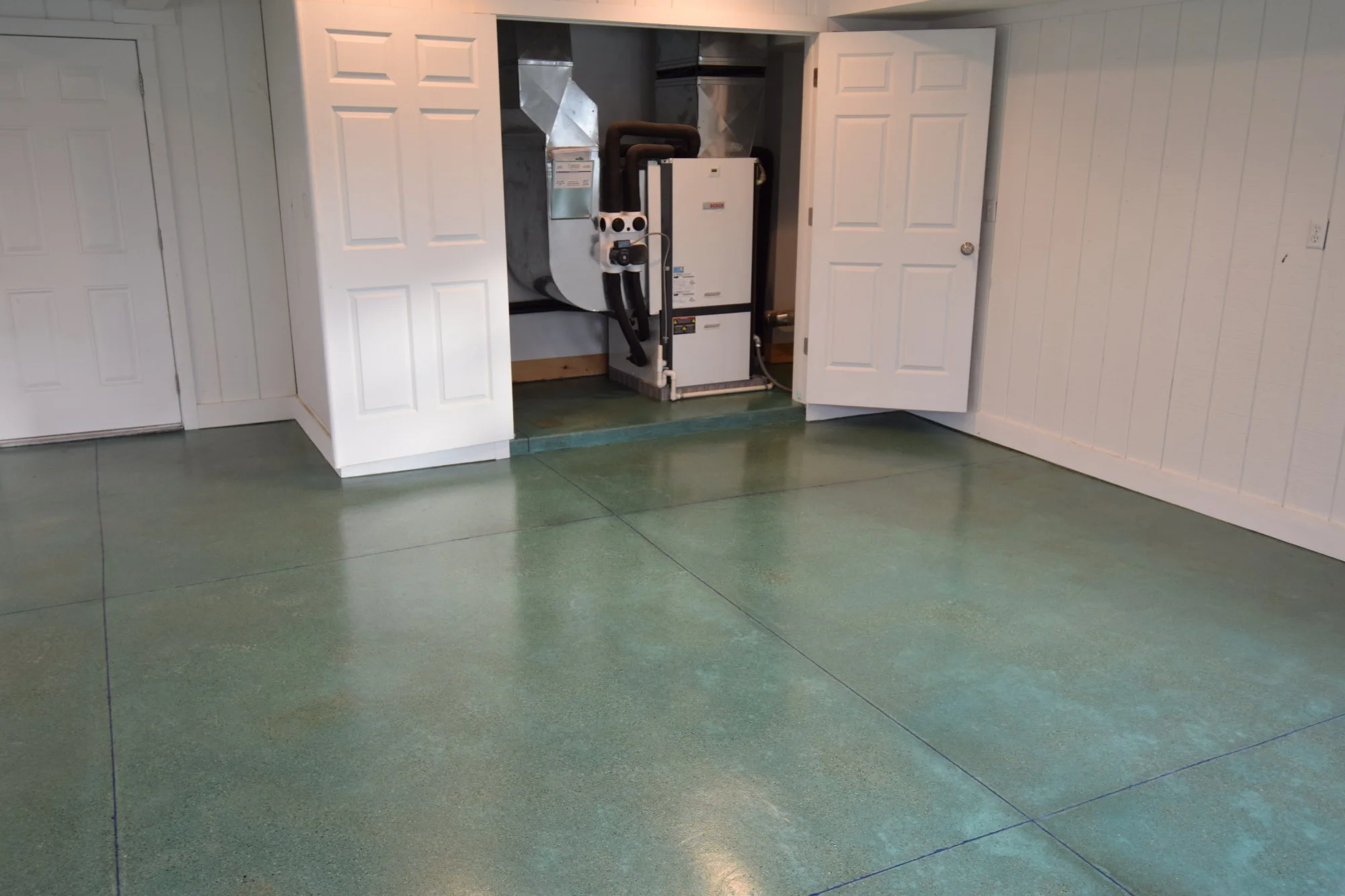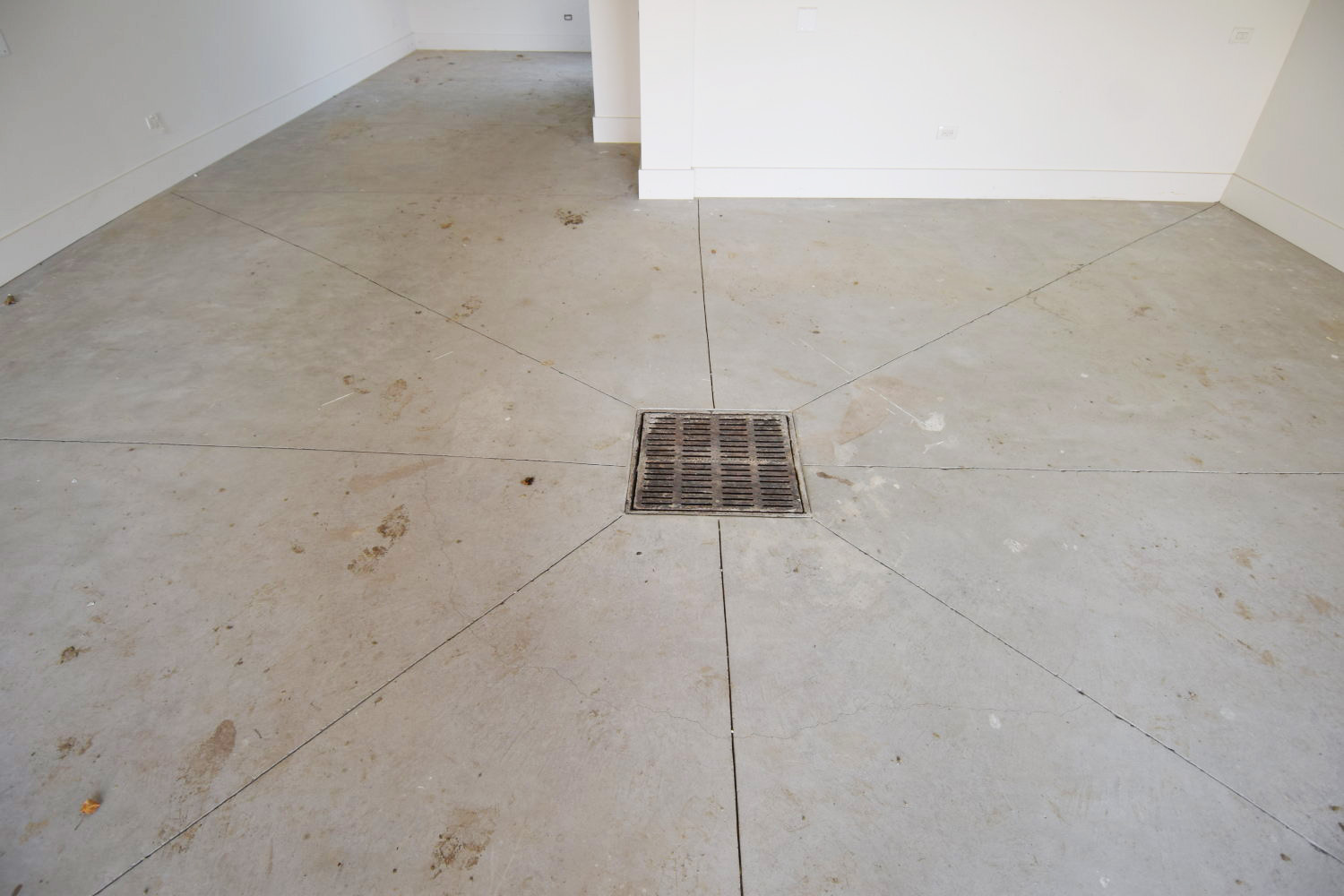concrete joint filling
The saw-cut control joints in this two-car garage were filled with dark blue polyurea joint filler to accent the blue-green acid stain and keep the joints from filling with salt and snow in the winter and joint edges from spalling due to vehicle tire pressure.
The decision about whether to permanently fill isolation and control fill joints, and how to do so, depends mainly on whether the concrete is indoors or outside, and whether it is a commercial or industrial setting, versus residential. It may also depend on a customer’s personal preferences and budget. Filling joints in an acid-stained concrete floor with a colored material that complements, matches, or accents the main color of the floor is the perfect way to enhance and embellish an already great looking floor. This feature can be important if the project space is in an upscale location, has a prominent, public setting, or is an area of a building that sees a lot of activity.
With this new garage floor, we recommended filling the control joints before acid-staining the concrete so as to prevent spalling from vehicle tires and to ease winter maintenance.
Because there were so many joints, we filled them with a polyurea joint filler of a similar, rather than accent, color so that they wouldn't be seen once the floor was stained and sealed.
Three types of materials are used for filling joints in acid-stained concrete floors: 1) sanded or un-sanded tile grout; 2) elastomeric urethane joint sealant; and 3) semi-rigid epoxy or polyurea joint filler. Most flooring contractors, if they offer this service, will use colored tile grout because it’s the oldest and simplest method. But tile grout is difficult to clean, and cracks and comes loose over time. The preferred method is semi-rigid joint filler because it has much better adhesion, is more durable, flexes under stress rather than crumbles or cracks, and is easy to place. Elastomeric joint sealant works great, too, but tends to be reserved for outdoor use, where joints, for example, in patios and pool decks, are wider, and the concrete has a rougher texture. Because elastomeric joint sealant is softer, it responds better to temperature swings, and because it takes longer to set up, it can be tooled, or finished, more precisely. It is also less expensive than semi-rigid joint filler. But it is more difficult to place, because backer rod and bond breaker tape has to be inserted into the joint first so that the sealant will only adhere to the sidewalls, and not the bottom of the joint, which would restrict its movement.
Sikaflex 2C is a high quality elastomeric joint sealant from Sika Corp, the world leader in construction sealant and adhesives. 2C is self-leveling and can be mixed with the small yellow color pack shown here for custom coloring.
Premier Veneers uses colored, high quality urethane joint sealant from Sika, outdoors, and polyurea joint filler from Metzger/McGuire, indoors, to fill isolation and contraction joints. These products look much better than tile grout and the joint fillers and sealants found at big box stores, like Home Depot and Lowe's. They are also more dirt-, water- and stain-resistant, and they last much longer. There is nothing worse to look at than a joint in a concrete floor, sidewalk, garage, or patio that is filled with an old, discolored, cracked and deformed material that is coming loose from the sides. Premier Veneers is trained and certified in joint filling, and we make recommendations at the outset of every acid-stained or decorative concrete flooring project about joint filling so that this sort of thing does not happen. Note: We also use these materials to fill saw-cuts we make in a floor during the course of a project for design purposes (see "Decorative Scoring" for more information on this topic).




